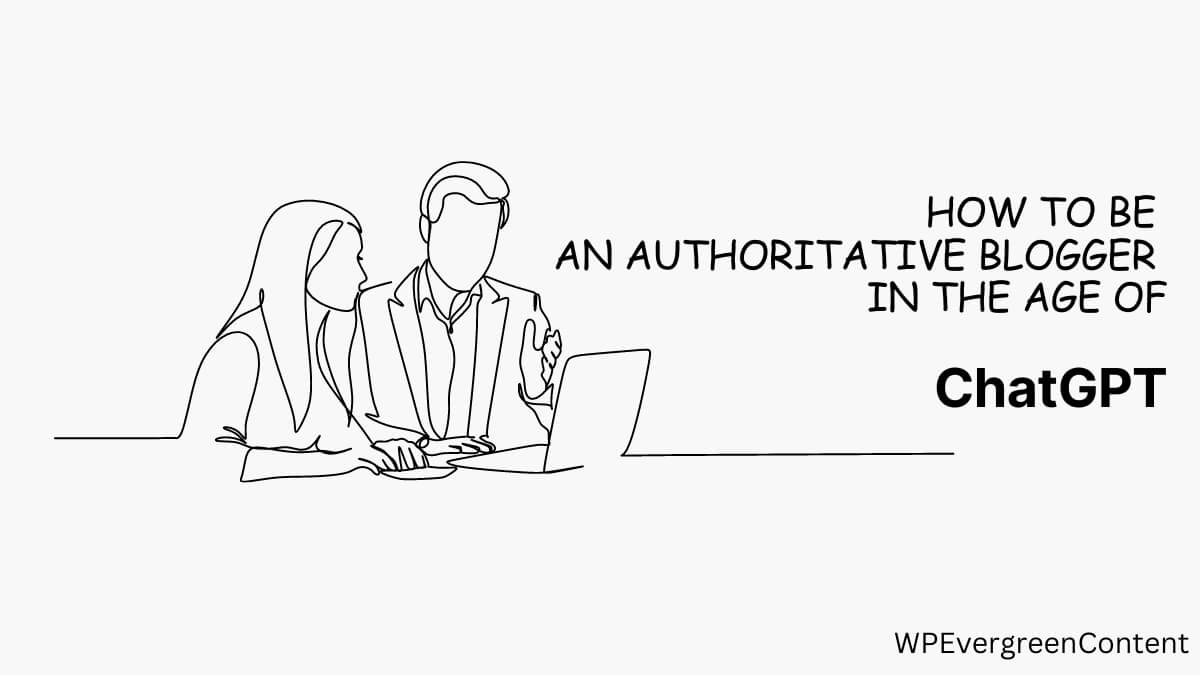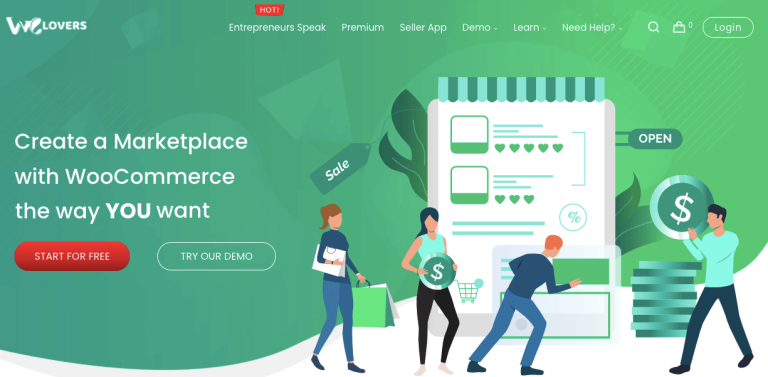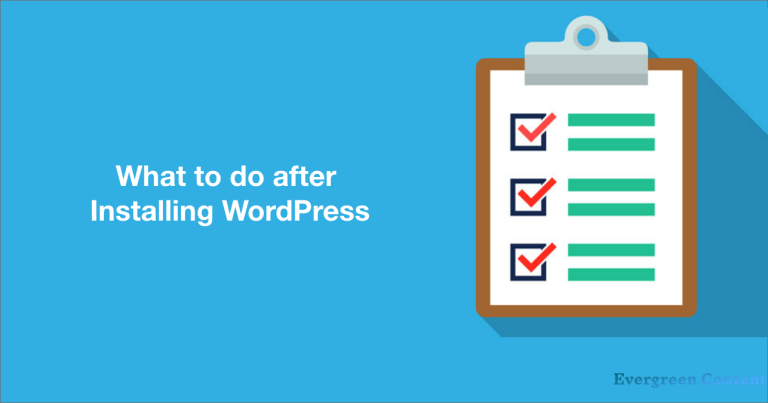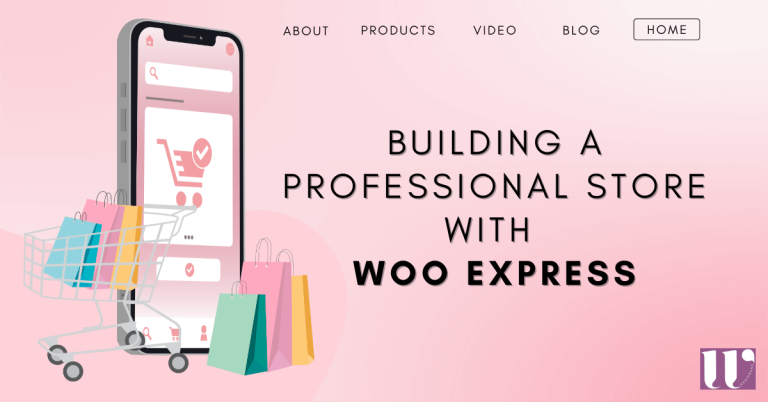How to Be an Authoritative Tech Blogger in The Time of ChatGPT
Today, technology is constantly evolving, and keeping up with the latest trends and news can be a challenge. As a tech blogger, it’s important to establish yourself as an authority in the industry to stand out in a crowded field.
With the rise of AI-powered language models like ChatGPT, it’s more important than ever to provide unique and valuable insights to your readers.
Here are some tips and strategies to help you establish and maintain your authority as a tech blogger.
1. Stay Up-to-Date on the Latest Tech Trends
According to a survey conducted by Edelman, 70% of business decision-makers say that thought leadership content is useful in establishing trust with an organization.
This highlights the importance of staying up-to-date on the latest industry trends and news as a tech blogger to establish credibility and build trust with your readers.
To be an authoritative tech blogger, it’s essential to stay up-to-date on the latest tech trends and news. This means reading industry publications, attending conferences, and following influential thought leaders on social media. By keeping up with the latest trends, you’ll be better equipped to provide valuable insights to your readers and establish yourself as an expert in the industry.
For example, let’s say you’re interested in writing about the latest advancements in artificial intelligence. You should-
- Follow influential thought leaders like Andrew Ng and Yoshua Bengio on social media
- Attend AI conferences like NeurIPS, and read publications like IEEE Spectrum and MIT Technology Review
Note: Learn how to start a WordPress blog for free-
2. Provide Unique Insights and Perspectives
With AI-powered language models like ChatGPT becoming more prevalent, it’s important to provide unique and valuable insights to your readers. This means going beyond the surface level and providing in-depth analysis and commentary on the latest tech trends and news. Don’t just regurgitate information that’s already out there; provide your own unique perspective and insights to stand out from the crowd.
A study by BuzzSumo found that long-form content (1,000+ words) gets shared more than short-form content.
Providing your own unique perspective and analysis on trending topics like EVs or AI, you can create in-depth, long-form content that offers real value to your readers and gets shared more widely across social media.
Let’s say you’re writing about the rise of electric vehicles (EVs). Instead of just regurgitating the latest news stories, you should offer your own perspective on the potential impact of EVs on the environment or delve into the economics of EV battery production.
3. Build Relationships with Industry Experts and Thought Leaders
Building relationships with industry experts and thought leaders can help establish your authority as a tech blogger. This means networking at industry events, reaching out to influencers on social media, and participating in online communities and forums. By building these relationships, you’ll have access to unique insights and perspectives that can help you provide even more value to your readers.
In a survey conducted by LinkedIn, 92% of B2B marketers said their content marketing efforts included social media.
By connecting with industry experts and thought leaders on social media platforms like LinkedIn, Twitter, and Facebook, you can build your network and gain access to valuable insights and perspectives that can inform your writing.
For example, you can reach out to leaders in the cybersecurity industry to get their take on the latest trends in online security or connect with venture capitalists to learn more about emerging startups in the tech space.
Note: Check free SEO tools you need as a blogger
4. Leverage Data and Statistics
Using data and statistics can help establish your authority as a tech blogger. By incorporating relevant data and statistics into your blog posts, you’ll provide more valuable insights and establish yourself as an expert in the industry. Be sure to cite your sources and provide context for the data you’re using to ensure that it’s accurate and relevant.
According to a report by Content Marketing Institute, 56% of marketers use data and analytics to drive their content marketing strategy.
By incorporating relevant data and statistics into your blog posts, you can provide more valuable insights and establish yourself as an expert in the industry. For example, in a post about e-commerce, you might cite statistics from Statista that show the global e-commerce market is projected to be worth $6.54 trillion by 2023.
Let’s say you’re writing about the growth of e-commerce. You can incorporate data from companies like Amazon and Alibaba to show how online shopping is changing the retail landscape, and cite research studies that explore consumer behavior around online purchases.
5. Focus on Quality over Quantity
In the age of ChatGPT and other AI-powered language models, it’s easy to fall into the trap of producing a large volume of content without much thought or effort. However, focusing on quality over quantity is essential to establish yourself as an authoritative tech blogger. Take the time to research and produce high-quality content that provides real value to your readers. This will help you stand out from the crowd and establish yourself as an expert in the industry.
According to a survey by Orbit Media, the average blog post takes 3 hours and 55 minutes to write.
By taking the time to produce high-quality, in-depth content that provides real value to your readers, you can stand out from the crowd and establish yourself as a go-to source for tech insights and news.
Let’s say you’re writing about the latest developments in quantum computing. Instead of churning out multiple articles with shallow analysis, you might focus on producing a single, in-depth piece that explores the real-world applications of quantum computing and its potential impact on industries like finance and healthcare.
6. Engage with Your Audience
Engaging with your audience is essential to establish and maintain your authority as a tech blogger. This means responding to comments and feedback, participating in online communities and forums, and even hosting Q&A sessions and webinars. By engaging with your audience, you’ll build a loyal following and establish yourself as a trusted authority in the industry.
A study by Sprout Social found that 83% of consumers like it when brands respond to questions or comments on social media. By engaging with your audience through comments, forums, and webinars, you can build a loyal following and establish yourself as a trusted authority in the industry.
You can respond to comments and feedback on your blog post. Also, participate in online forums or host webinars to answer questions and share your insights with your audience.
7. Be Consistent
Consistency is key to establishing and maintaining your authority as a tech blogger. This means posting regularly and consistently, maintaining a consistent voice and style, and sticking to your niche and areas of expertise. By being consistent, you’ll build a strong brand and establish yourself as a go-to source for tech insights and news.
According to HubSpot, companies that published 16+ blog posts per month got almost 3.5 times more traffic than companies that published 0-4 monthly posts.
By setting a regular schedule of 2-3 high-quality posts per week (it’s up to your capacity), you can drive more traffic to your blog and establish yourself as a reliable source of information for readers who are interested in the latest tech trends.
If you’re running a tech blog focused on the latest smartphone technology, you should publish 2-3 posts per week that offer unique insights into new releases, reviews, and comparisons between different models. You’ll be able to establish yourself as a reliable source of information for readers who are interested in the latest tech trends.
Top Influential Content Marketers’ Suggestions to Be Authoritative Blogger
Here are 5 quotes from top influencer content managers:
Kevan Lee
Consistency is key. The more consistent you are with your content creation, the more people will come to rely on you as a source of information and knowledge. -Kevan Lee, VP of Marketing at Buffer.
Ann Handley
Be authentic and genuine. Don’t try to be something you’re not or pretend to have expertise in an area you don’t. People can spot a fake from a mile away. -Ann Handley, Chief Content Officer at MarketingProfs.
Joe Pulizzi
Provide value. Your content should always be focused on providing value to your readers, whether that’s through education, entertainment, or inspiration. -Joe Pulizzi, Founder of Content Marketing Institute.
Neil Patel
Engage with your audience. Building relationships with your audience is essential to building your authority and growing your following. -Neil Patel, Co-founder of Neil Patel Digital.
Jay Baer
Stay on top of industry trends and news. To be an authoritative content manager, you need to stay ahead of the curve and be the first to report on new developments in your industry. -Jay Baer, Founder of Convince & Convert.
Hubspot CEO Yamini Rangon’s Suggestions to Be an Authoritative Blogger
Hubspot CEO Yamini Rangon recently shared a post on LinkedIn discussing the challenges businesses face in establishing connections with their customers. The most difficult challenge for growth is the disconnect between companies and their customers. Traditional methods used to build customer relationships and attract new customers are becoming less effective.
Rangon provides data to support this claim, citing that organic reach from social media has continued to decline, while search engine traffic is also dropping. Additionally, email is becoming increasingly noisy, with low open rates affecting marketers’ ability to connect with their audience.
These challenges are leading to declining organic traffic, lead generation, and conversion rates for businesses. To adapt to these changes, HubSpot suggests evolving the go-to-market (GTM) strategy by prioritizing value over volume.
The key takeaways from Rangon’s post are:
- The traditional channels used to build customer relationships and attract new customers are becoming less effective.
- Channels are oversaturated with content and ads, pushing buyers away.
- It’s time to evolve the GTM strategy to match how buyers want to connect today by prioritizing value over volume.
- Businesses should focus on creating high-quality content that adds value and stands out in a crowded space.
- Companies need to dig into insights, deliver deep relevance and leverage Gen AI to create personalized content.
- SMBs can benefit from Gen AI by using it for ideation, editing, and personalization.
Yamini Rangon’s 3 suggestions in detail:
Dig into insights: Businesses need to analyze their data to understand which channels and formats are performing best and double down on them. By identifying the 20% of content that is driving 80% of connections with customers, businesses can optimize their content strategy and focus on what works best.
Deliver deep relevance: Once businesses have identified the channels and formats that work best, they need to deliver an exceptionally relevant message to stand out from the competition. They can use customer insights to tailor the experience based on where customers are in their journey, recent interactions, buying history, etc.
Leverage Gen AI: While some businesses may think that they should use Gen AI to create large volumes of content, Rangon suggests that value, not volume, should be the focus. Instead, businesses can use Gen AI for ideation, editing, and personalization to save time and add value. For example, SMBs can leverage Gen AI to generate blog post ideas or edit existing content to improve its quality.
Conclusion on Practices to Be Authoritative Blogger
Establishing and maintaining your authority as a tech blogger in the age of ChatGPT requires a strategic approach and a commitment to providing valuable insights and perspectives. Here are the key takeaways-
- Stay up-to-date on the latest tech trends
- Provide unique insights and perspectives
- Build relationships with industry experts
- Leverage data and statistics
- Focus on quality over quantity
- And engage with your customers.







